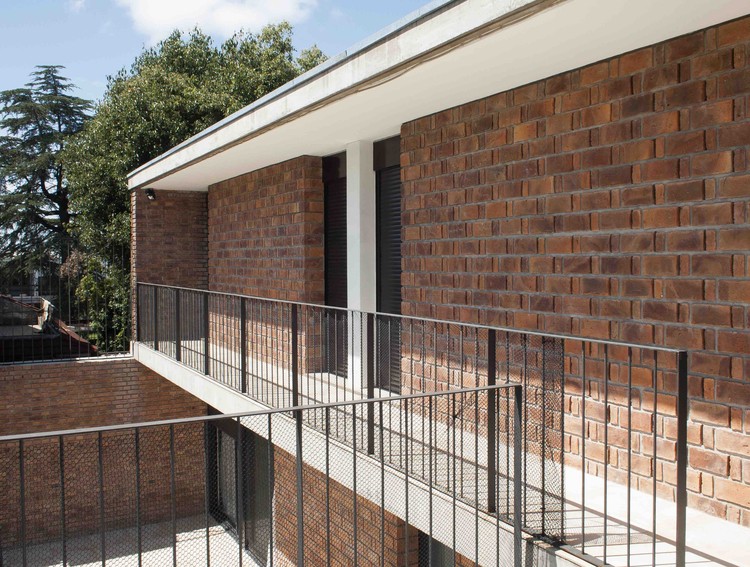
-
Architects: Paulo Ambrosoni
- Area: 255 m²
- Year: 2013
-
Photographs:Paulo Ambrosoni
-
Manufacturers: Alfredo Finozzi, Ladrillera Mainardi, Montajes y Metalúrgica de Salto

Text description provided by the architects. The project is an urban housing for a family with three girls in Salto, a city located on the eastern bank of the Uruguay River.
The construction of 255 square meters on two levels is located on the obligatory frontal limit of 3 meters from the street, leaving free the largest patio area for the North sun.
The land where the housing is implanted has a public pedestrian passage to the west, on this side the land narrows with a curve in the middle of its depth. This singularity is solved by the garage and a storage room, thus regularizing the patio.

The Constructive System
The project is defined from the choice of the construction system.
The city of Salto has an interesting history of works of architecture in brick seen of great quality. Since the 1970s, Eladio Dieste's buildings, among others, have masterfully used the structural and formal qualities of brick.


The provision of specialized workmanship and first quality raw material allowed using the constructive system of load bearing wall of exposed brick and concrete slabs in an effective way.

Formal Structure
The brick walls in English rig are arranged orthogonally and without voids. In the open spaces are located the openings from floor to ceiling.
The four bedrooms with dressing rooms upstairs are used to modulate the structure. In ground floor the living room, dining room and kitchen are articulated in a free light of 5.70 meters.


The shape responds to the constructive system with continuous walls. The textures of the external partitions are achieved with protruding bricks and open joints to ventilate the chambers of ventilated facades.

Bioclimatic Considerations
The climate in the city of Salto is very humid all year round, with very high temperatures in summer and low in winter.
The mass of the brick walls provides insulation and thermal inertia to regulate the great variations of temperature during the year.

The house is closed to the south and to the street, opens to the north and the patio where eaves are used to protect against the strong summer sun and allow the entrance of solar radiation in winter.

It also regulates humidity and heat through cross ventilation in all spaces, using banners on the doors and making in summer the fresh air of the south façade in shade runs through the house.





















